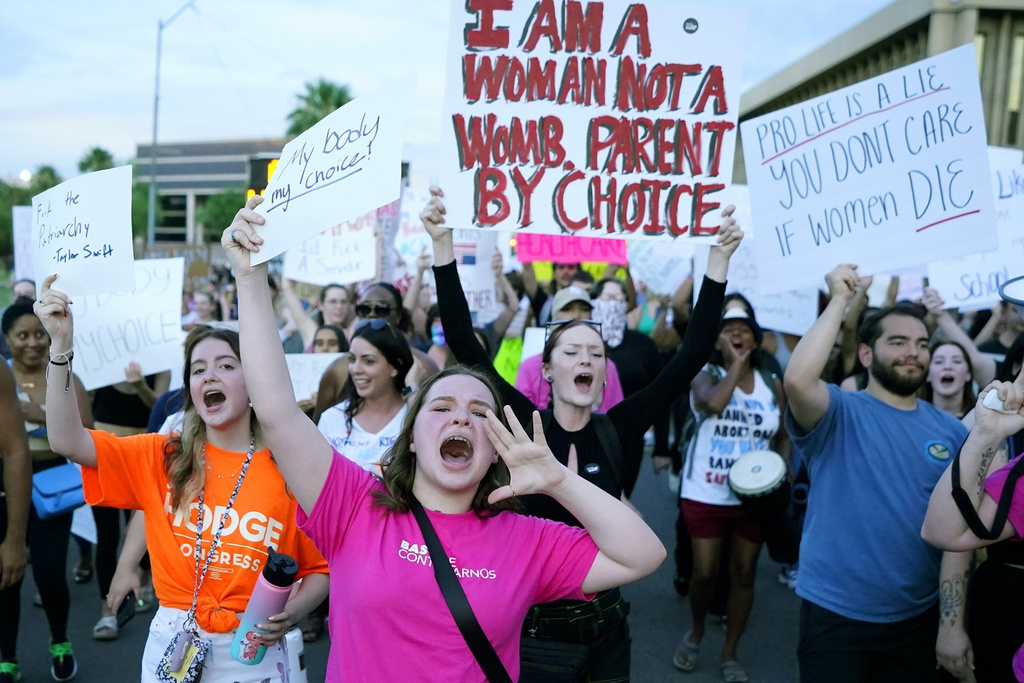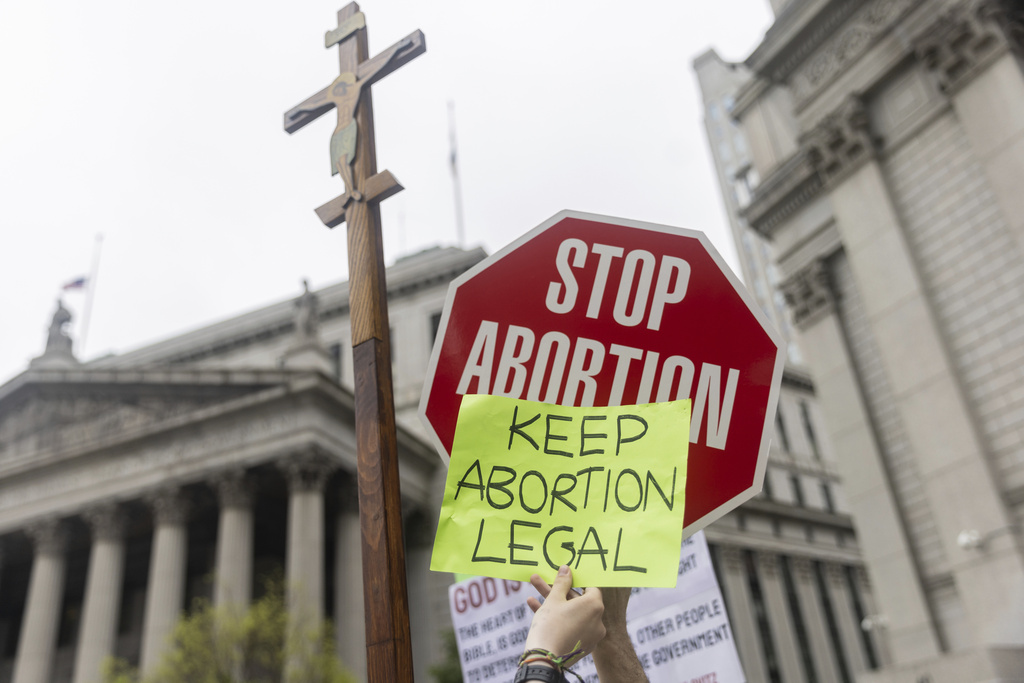Abortion Rights on the Ballot: Nine States Face Key Decisions \ Newslooks \ Washington DC \ Mary Sidiqi \ Evening Edition \ Voters in nine states are deciding on measures that could enshrine abortion rights in their state constitutions or maintain existing access, impacting millions of women. The outcomes could either dismantle current restrictions or preserve protections, reflecting a wider debate influenced by legislative control, court rulings, and presidential candidates’ positions on abortion. If these measures pass, they could signal strong public support for reproductive rights.

Abortion Rights on State Ballots: Key Points
- Nine states are voting on measures to secure or limit abortion rights.
- Amendments in Arizona, Florida, Missouri, Nebraska, and South Dakota could undo existing abortion restrictions.
- Abortion access has become a focal issue in the 2024 presidential and congressional races.
- States like Colorado and Maryland aim to protect current abortion laws in their constitutions.
- Voter turnout is expected to surge, driven by the importance of these ballot questions.
Deep Look
High-Stakes Decisions in Key States
The ballot initiatives in Arizona, Florida, Missouri, Nebraska, and South Dakota hold the potential to dismantle current restrictions on abortion. Should these amendments pass, they could lead to expanded access for over 7 million women of childbearing age who reside in states with significant restrictions. These proposals come as states continue to navigate their own abortion policies in the post-Roe era, with courts, legislatures, and other state officials playing key roles in determining access.
In Arizona, for example, abortion is currently restricted after 15 weeks of pregnancy. The state’s proposed amendment gained momentum following an April ruling by the Arizona Supreme Court that the state could enforce an abortion ban dating back to 1864. Some Republican lawmakers even joined Democrats in repealing this outdated law to prevent enforcement, reflecting how contentious the issue has become across party lines.
If passed, these measures could spark legal battles, as state supreme courts will likely be called upon to review and potentially invalidate existing bans. Clinics and healthcare providers may need to secure licenses and increase staffing to accommodate expanded access, which would take time to implement.
Presidential and Congressional Influence on Abortion Policy
Trump, meanwhile, has taken a more nuanced stance, claiming that abortion laws should be left to individual states. Yet, he has faced challenges appealing to a broad spectrum of voters, balancing his anti-abortion base with the majority of Americans who support reproductive rights. His statements have fluctuated, from promising to veto a national abortion ban to taking credit for the court’s decision to overturn Roe. His approach mirrors the challenges faced by many Republican candidates, who, amid shifting public opinion, have sought to distance themselves from restrictive policies.
Legal and Social Complexities Surrounding Abortion Bans
Currently, 13 states have implemented bans that prohibit abortion at nearly all stages of pregnancy, with limited exceptions. Four other states, including Florida, restrict abortion access to the first six weeks, a period when many women are unaware they are pregnant. Despite these restrictions, the use of abortion pills and organized networks to assist women in traveling for care has slightly increased the monthly number of abortions nationwide. Still, abortion rights advocates emphasize that these restrictions have disproportionately limited access for lower-income and minority populations, particularly in states with stringent bans.
State-by-State Breakdown of Abortion Measures
While the goals of these ballot questions are broadly similar, each one operates within its own political and legal context. In some states, the proposals face additional hurdles:
- Florida: Florida’s proposal requires 60% voter approval to pass, a threshold that reflects the state’s conservative lean. If successful, the amendment would repeal Florida’s six-week abortion ban, a law enacted earlier this year under Governor Ron DeSantis, who has supported anti-abortion measures as part of his national political platform. DeSantis’s administration has actively opposed the amendment, launching campaigns and sending warnings to TV stations airing pro-abortion ads.
- Nebraska: In Nebraska, voters face two competing ballot measures. One would extend abortion access beyond 12 weeks, while the other would solidify the state’s existing 12-week restriction, setting the stage for possible future limitations. The outcome will determine which direction the state ultimately takes on abortion access.
- South Dakota: South Dakota’s proposal, which allows certain health regulations after 12 weeks, has divided national abortion rights groups. While it would expand access, the inclusion of regulatory language has deterred some organizations from endorsing it fully.
- Missouri: In Missouri, passing the amendment could lead to an expansion of abortion rights, but the state’s legal framework would still require courts to overturn existing restrictions. Clinics would also face logistical hurdles in restoring services.
- Arizona: Arizona’s proposed amendment could have significant implications, given its status as a battleground state in the presidential election. The measure’s backers rallied support after an April Supreme Court ruling validated a nearly 160-year-old abortion ban, which lawmakers quickly sought to repeal before enforcement.
Enshrining Current Abortion Laws in Other States
In Nevada, a state where control of the government is split between parties, the ballot measure requires approval this year and again in 2026 to take effect. Montana, which has a competitive U.S. Senate race this year, could see significant turnout influenced by the abortion measure on its ballot.
In New York, the proposal uses broad language to bolster reproductive rights by banning discrimination based on “pregnancy outcomes and reproductive healthcare autonomy.” Although it does not explicitly mention abortion, advocates see the measure as essential to safeguarding access amid political uncertainty.
Future of Reproductive Rights Hinges on Voter Decisions
For conservative leaders, however, any successful opposition to the measures could reveal strategies to curb abortion support. “If some of them fail, conservatives will look closely to understand what strategies effectively resonated with voters,” Ziegler added.
Ultimately, the passage or rejection of these measures will shape abortion policy nationwide, highlighting the growing influence of voters in determining state-by-state access to reproductive healthcare.







